Hiroshima
Were it not for that fateful day in August 1945, few would have reflected over a city called Hiroshima in the south mainland Japan. Hiroshima was one of several options discussed by the Americans as suitable targets for the new atomic bomb to be dropped. Other options included Kyoto and Yokohama, though Kyoto was abandoned due to its religious significance. In the end the choice fell on Hiroshima. It was a large city, it was surrounded by mountains which concentrated the bomb blast on the city. Nor did it have any major cultural or religious significance that stood out worth considering. Hiroshima was also a repository for large quantities of military materials.
When the American B-29, Enola Gay, took off from the air base on Tinian Island in the western Pacific Ocean, August 6, 1945, the weather was good. Hiroshima was first choice, but if the weather deteriorated during the day, the cities of Nagasaki and Kokura were secondary targets. The bomb (called Little Boy) was dropped at 08.15 am, local time, and exploded after 57 seconds at a height 600 meters with a force equivalent to 13 kilotons of TNT. Everything within a radius of 1.6 kilometers was destroyed and fires erupted within a radius of 11,4 kilometers. In total, 90 percent of Hiroshima was destroyed or partially destroyed. Of the 225 000 people living in Hiroshima, 90 000 died within four days after the explosion. Since there were POW camps in the area, it is very likely that American POWs also died from their own government’s atomic bomb.
When Japan did not surrender, the Americans decided to drop another bomb. Three days later, the B-29, Bockscar, carried out the second and (so far) last atomic bomb mission in history. This time, the first target was the city of Kokura, with Nagasaki as a secondary target. When Bockscar arrived at the rendezvous point, not all planes had arrived. The Bockscar then circled over the rendezvous point waiting for all the planes to arrive. For various reasons, not all planes made it to the rendezvous point, but the captain of Bockscar still decided to fly on to Kokura even though clouds had formed over the city. A prerequisite for dropping the second atomic bomb (as well as the first) was a clear view of the target. But when Bockscar arrived at the target (Kokura), the clouds prevented a clear view. The captain then decided to fly on to the secondary target Nagasaki. At 11.01 am, local time, Bockscar dropped the second atomic bomb, called Fat Man.
The bomb exploded after 43 seconds at a height of 469 meters about three kilometers from the intended epicenter with a force equivalent to 21 kilotons of TNT. Fat Man’s explosion was mostly concentrated in the Urakami Valley, which mitigated the bomb’s effect on the center of Nagasaki. Of Nagasaki’s 240 000 inhabitants, 70 000 died immediately and about 60 000 were injured. Everything within a 1.6 km radius was destroyed and fires erupted 3,2 km from the epicenter. Among the dead were refugees from Hiroshima. Japan refused to surrender for another six days and the US prepared to drop a third atomic bomb around August 17 or 18. However, Japan realized the inevitability and surrendered on August 15. The surrender was signed September 2, when US Commander-in-Chief in the Pacific, General Douglas MacArthur, received the Japanese delegation on the battleship, USS Missouri, in Tokyo Bay.
Current status: Rebuilt with monument/museum (2002).
Location: 34°23'44" N, 132°27'13" E (Atomic Bomb Dome).
Get there: Tram.
Follow up in books: Marston, Daniel: The Pacific War: From Pearl Harbor to Hiroshima (2010).
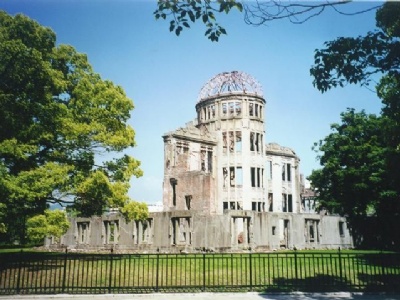

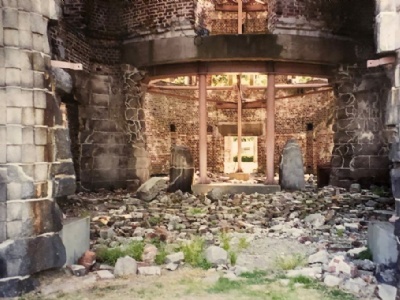
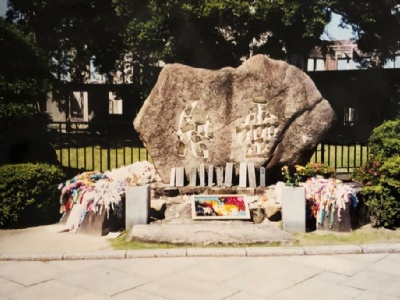
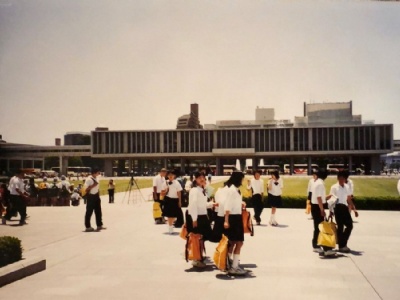

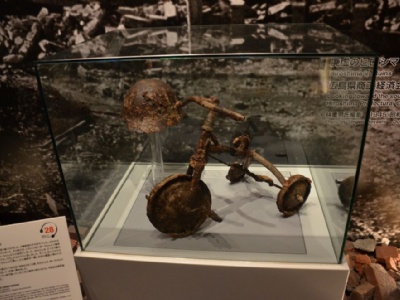
Hiroshima (and Nagasaki) will always be associated with the atomic bomb. The most interesting ruin of the atomic bomb is what has come to be known as the Atomic Bomb Dome. It survived remarkably well despite being located directly below the bomb’s epicenter. Before the bomb, the building was an industrial exhibition hall but it is now the most significant physical legacy of the atomic bomb and is located in the Hiroshima Peace and Memorial Park. In addition to the dome, there are several other monuments and at the far end is a museum. The museum displays lots of objects found after the explosion in most deformed forms as a consequence of the heat generated by the bomb. Other interesting items include dioramas and detailed scale models showing Hiroshima both before and after the explosion. The two B-29s that dropped the atomic bombs, Enola Gay and Bockscar, are in separate museums in the US. Battleship, USS Missouri, is a floating museum at Ford Island, Hawaii, next to Pearl harbor.
What makes the museum in Hiroshima interesting is not only its richness in detail, but also how Japan portrays the war and the war crimes that followed. Compared to Germany, which has acknowledged its guilt and come to terms with its own history (depending who you ask), it cannot be said that Japan has done the same. The museum focuses on the consequences of the atomic bomb and makes no mention of Japan’s role and atrocities between 1931 (when Manchuria was invaded) and 1945. Japan’s ravages in China are referred to in official contexts as the "China Incident" and Hiroshima is compared to Auschwitz, thus portraying Japan as a victim rather than a perpetrator.
Unlike the German state and German companies, which have paid large amounts of compensation to individuals and states for their suffering during the Second World War, Japan has not done the same. Although millions of Chinese and Koreans (and others) were forced into slave labor by Japan, no significant aggrement has been made to compensate their suffering. Likewise with Japan’s recognition and absence of monuments dedicated to Japanese victims of the war. Medical experiments carried out by Japanese doctors on innocent victims have not received the same attention as the victims of Nazism. Very few people have heard of Unit 731, a medical unit in Harbin, in north-eastern China, where medical experiments was conducted on Chinese people, often resulting in death or permanent disability.
There has been and still is a lot of discussion about the purpose of the atomic bombs with different theories. One theory is that the Americans wanted to avoid further losses of american soldiers. The landings on Iwo Jima and Okinawa, the Americans lost about 28 000 and 72 000 men respectively. If they landed on the Japanese mainland, the loss of men would be much greater and the Americans wanted to avoid this. An atomic bomb would prevent the loss of further American soldiers’ lives. Another theory, of foreign politic nature, is that the Americans wanted to send a clear message to Soviet Union and Stalin what they were capable of. Although US and Soviet Union were allies in the war against Germany and Japan, they understood the importance of gaining a military advantage over eachother after the war. It did not take long after the war before the Soviet Union had produced their own atomic bomb, which was tested in 1949.